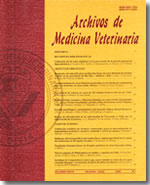Aquaculture diversification: a Chilean program for the future
Conteúdo do artigo principal
Resumo
In the productive agenda of Chile, the aquaculture industry represents one of the strategic areas for growth of national economy, which searchs for production diversification as a mechanism to reduce the impact of fluctuations on the economic and market environment. The growing global demand of food generates multiple opportunities. The UN estimate that the world population will exceed 9,000 million people in 2050. Current sources of food (agriculture, livestock and fisheries) will be insufficient to meet global food demand. While food production through agriculture and livestock is growing at a rate of 2% per year, fishery production is not, and food production through marine aquaculture has grown over 7% per year (FAO 2013). In the scenario of global aquaculture, our country has achieved a leading position among supplier and producers, thanks to sustained growth of salmon farming, and more recently of mussels. This development has required an investment in training the necessary human capital, technological capabilities and generate own experience; process in which universities and institutions of technical and higher education play a key role in training professionals, technicians and skilled manpower to meet the needs of the industry in areas such as production, processing, marketing etc., as well as service areas. All this has allowed to achieve an increase in productivity and exportation of products to international markets.

